
9 minute read
PARK CITY LIFE
LIFE ON THE OTHER SIDE
PHOTO COURTESY JANS / BY ERIC SCHRAMM
GETTING IN TUNE
BY TONY GILL
THERE’S A PROFOUND CHILL to the early morning darkness, but the atmosphere is filled with anticipation. The shortest days of the year are some of the most exciting, as people head back to the mountains to escape everyday existential drudgery. After a year of enduring arcane skier reservation systems, limited capacity lodges and overwhelming uncertainty, the entire community is ready for the lifts to start spinning again. For skiers and snowboarders in Park City, it’s prep time, and you could do worse than getting ready with a fresh tune from Rennstall before attacking the early season snow. Rennstall tunes for the likes of World Cup racers and X-Games champions, so the rest of us can trust our edges will be plenty sharp and bases fast for hitting the slopes. 2250 Deer Valley Dr, 435-649-1833, jans.com
TAKE THE LONG WAY
Park City alters backcountry access policies after avalanches
BY TONY GILL
IF THE SKULL AND CROSSBONES weren’t ominous enough, the all caps “YOU CAN DIE” was meant to be. The warning—printed on the orange gate separating avalanche-controlled terrain within Park City Mountain boundaries from uncontrolled backcountry terrain on adjacent forest service land—is a blunt statement about the hazards of skiing and snowboarding in the backcountry, especially for those without the requisite knowledge and equipment. The appeal of untracked powder leads many, heedless of caution, to head out anyway, and, after two fatal avalanches just weeks apart in January 2021, Park City indefinitely closed backcountry access gates at the resort. The popular gate atop the Ninety-Nine 90 Express chairlift remains permanently closed, though the gate atop the Peak 5 chair will reopen.
The move irked some backcountry skiers and riders who had long used the resort’s chairs to chase untracked powder just beyond the ropes. Others felt the move was warranted, as throngs of unprepared people having easy access to avalanche terrain—in full view of and just steps from the chairlift—seemed a recipe for disaster.
“We have made the decision to reopen the resort exit on Peak 5 for backcountry access, and to permanently close the exit at the top of Ninety-Nine 90. While both exits access the same area, the Peak 5 exit requires more hike-to effort, preparation and intention to reach the terrain,” Park City Mountain COO Mike Goar said in a prepared statement released in August.
The issue came to a head during a particularly tragic avalanche season in Utah that saw six skiers and snowboarders killed, including two along the Park City ridgeline after exiting the Ninety-Nine 90 gate. The snowpack’s persistent instability was cited as a cause, but, even in years without compounding stability issues, accidents happen. There have been nine fatalities along the Park City ridgeline since 2000, and ease of access is almost certainly a contributing factor. Significant avalanche paths are mere steps away from the top of the Ninety-Nine 90 chair. Many lead directly back into the resort, doubling down on the convenience. From Peak 5, accessing the ridgeline requires using specialized climbing skins, or a superhuman appetite for nightmarish postholing up hundreds of vertical feet of snow.
“The Peak 5 gate encourages more responsible use both because of the increased effort it requires and the lack of a visual from the gate itself to the terrain it accesses,” says Chris Tolli, a longtime backcountry skier who frequents the Park City ridgeline. The change isn’t a panacea, however. “There’s still a lot of avalanche terrain people can get themselves into quickly,” warns a Park City ski patroller who spoke about the topic on condition of anonymity. “Often all it takes is seeing someone go through the gate and people will get excited to follow.”
Backcountry skiing and riding carry inherent risk, and eliminating every accident is impossible. But if moving the gate could mitigate some accidents while enabling people to access national forest land like they have for decades. It’s worth a try.
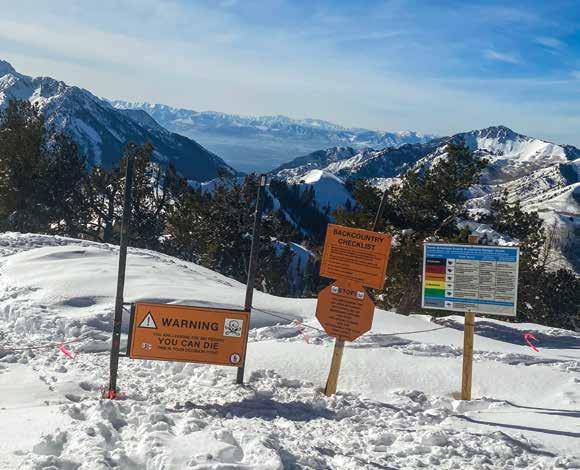
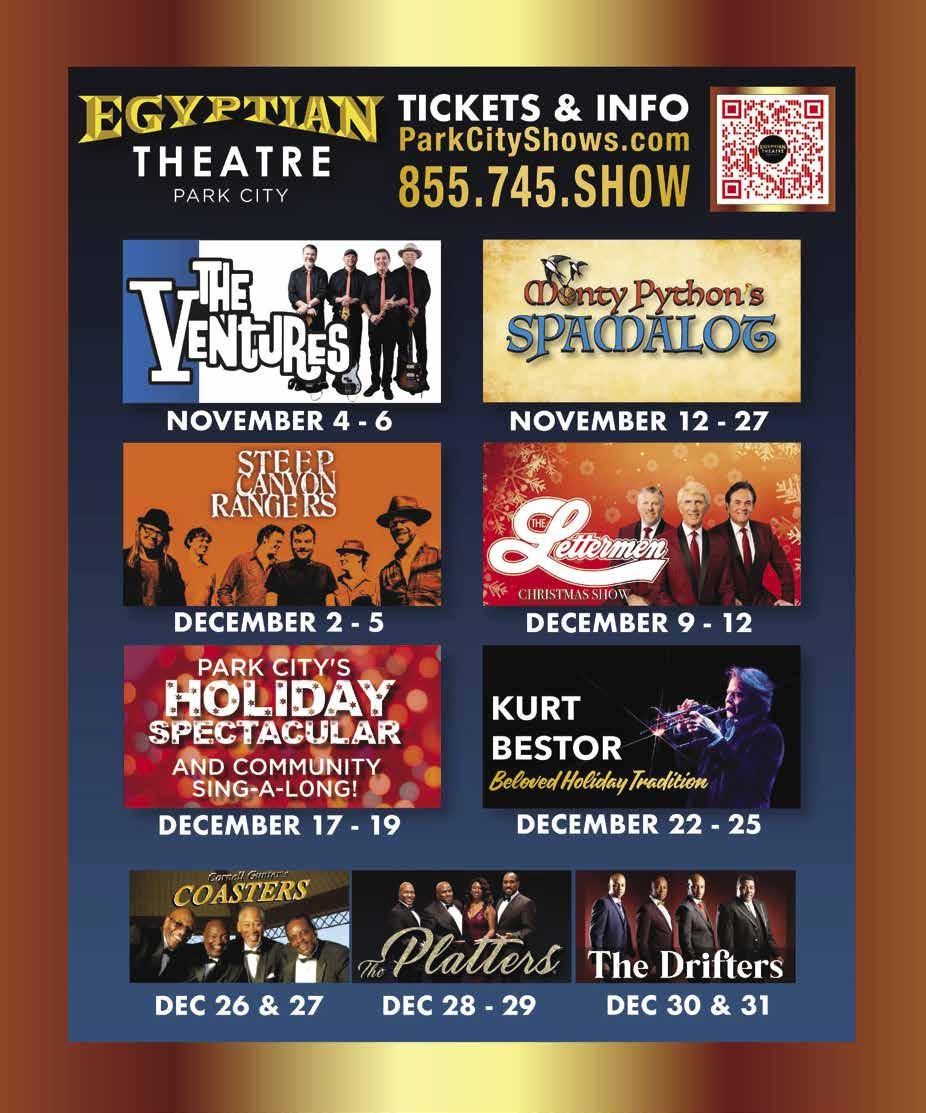
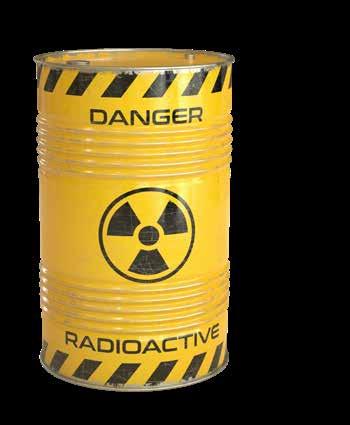
THE WASTE REPOSITORY THAT WASN’T
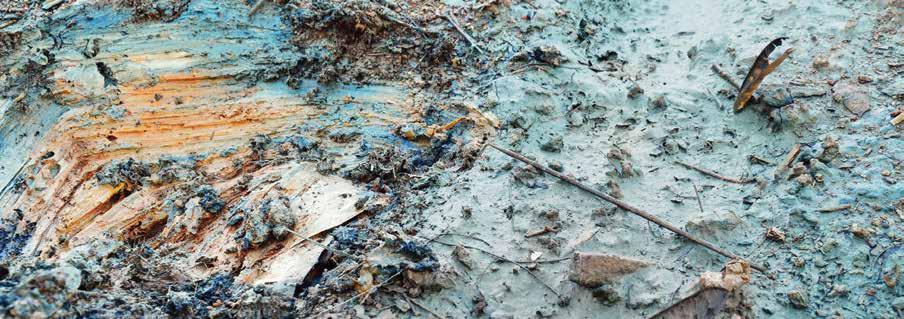
The planned contaminated soils repository was to hold 140,000 cubic yards of material. That’s enough for 15 years storage, after which it was to be capped and turned into open space for recreation. Construction was estimated to cost $2.7 million but recoup multiples of that initial investment over the course of its lifetime.
THE DIRT ON PARK CITY
Plans for Park City contaminated soils facility crumble under withering opposition
BY TONY GILL
WHAT WE’RE DEBATING HERE is the very foundation of this community. It’s the literal ground we’re standing on—like the actual dirt. Seriously. Even the dirt in Park City is fraught with contradiction, caught between a bygone silver mining era and the eternal transformation into a worldwide destination resort for outdoor enthusiasts, art aficionados, indie movie darlings, cuisine Instagrammers and whomever else we can market the community to. That mining part left a legacy of environmental contamination—tailings laced with lead, arsenic and the like—which is quite literally resurfacing as the development boom races ahead in its myriad of incarnations. The questions at hand are, one, what we do with those soils and, two, who’s responsible for them. Thus far, Park City hasn’t dug up any easy answers.
Building new things first requires digging holes in the ground, and Park City is doing a lot of both. The proposed Arts and Culture District, for example, will unearth endless piles of soil needing to go somewhere. Because the soils are contaminated it can’t just be haphazardly dumped. Carbon-based life doesn’t get along great with mining-era contaminants.
Currently, every truckload of contaminated soil from Park City is taken down to a contaminated soils repository in Tooele, a solution which is expensive and laced with ethical quandaries about offloading inconvenience on another community. City officials sought another solution: to build a repository on municipal acreage alongside S.R. 248, which would be more cost effective. The city previously used a repository in Richardson Flat, but it has been closed since 2010.
The concept, with both its flaws and virtues, never got off the launch pad. An overwhelming flood of negative community pushback thrust the issue to the forefront of public consciousness. It was called a toxic waste dump and a community hazard. Even if those proclamations are vague and hyperbolic, some concern is valid. “Utah has weak fugitive dust regulation, which means there are insufficient controls to keep contaminants from being airborne,” says Scott Williams, Executive Director of HEAL Utah. “It’s more well-regulated when transporting materials off site, but the process hasn’t been well publicized or transparent enough.” City officials say disinformation created the charged atmosphere, which ultimately led every mayoral and city council candidate in the 2021 election to abandon the solution they’d designed. Councilors Max Doilney, Steve Joyce and Tim Henney all asserted deep politicization of misinformation derailed honest assessment. Incumbent Mayor Andy Beerman and challenger Nann Worel both stated the need to respect the desires of the community, while noting the issue wouldn’t evaporate under the status quo.
For now, Park City keeps on trucking…dirt to Tooele. But the larger issue won’t stay buried.
RESORT FARE RE-IMAGINED
Dine around Park City with cuisine for every particular palate
BY TONY GILL
HIGH IN THE PARK CITY MOUNTAINS, the term resort fare became a sort of euphemism. Meals were well-prepared if uninspired iterations of vaguely western-themed Americana. This isn’t quite an indictment of Park City dining’s old guard, but an acknowledgement that restaurants here lacked that certain spice of life. “Variety” some call it. A procession of new chefs and restaurateurs have come to the hills, changing the culture of cuisine on the Wasatch Back.
We went on an exhaustive and calorie-intensive journey around town from the heart of Main Street to the outer reaches of Snyderville Basin, all with the goal of mapping out dining itineraries tuned to any taste. Carnivores, we have you covered with top cuts. Vegetarians, we compiled cuisine for your values. Fish lovers, we found flavors that won’t leave you floundering. Read on for some of our favorite dishes and get ready to take your taste buds for a trip around Park City.
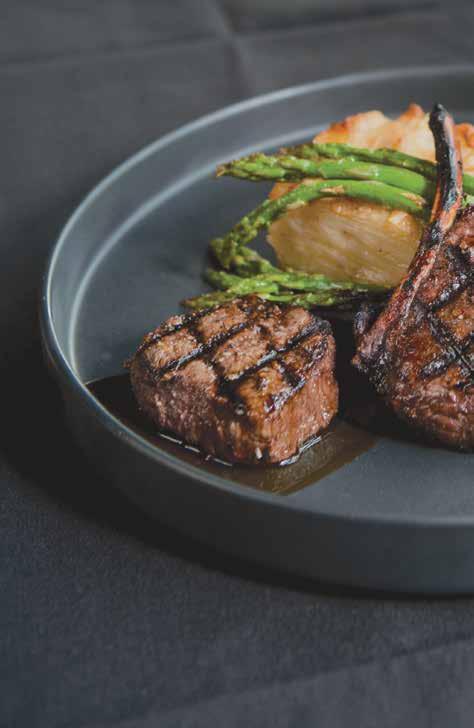
SASHIMI PLATTER FROM SUSHI BLUE
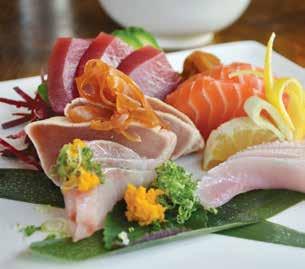
PHOTO COURTESY SUSHI BLUE
SUPERB SEAFOOD
It doesn’t get more landlocked than Utah, but that doesn’t mean seafood lovers will be fish out of water. Dive in.
BREAKFAST
Lox Sandwich ($8.99) from Park City Bread and Bagel This lox sandwich is a finelyexecuted standard, especially because the cured salmon is served on a bagel that even New Yorkers must admit is delicious.
3126 Quarry Rd., 435-602-1916, parkcitybreadbagel.com
LUNCH
Real Mainah Lobster Roll ($27) from Freshie’s Lobster Co.
Freshie’s lobster rolls won the title of World’s Best Lobster Roll in 2017 while competing against the best the Northeast has to offer. This one’s a favorite for even the most ardent locals from the upper right.
1915 Prospector Ave., 435-6319861, freshieslobsterco.com
DINNER
Salmon L. Jackson Roll ($19) and Small Sashimi Plate ($45) from Sushi Blue
The finest high-altitude sushi around is at Sushi Blue. The clever names adorning many of the rolls on the menu are almost as delightful as the dishes themselves. Almost.
1571 Redstone Center Dr., 435575-4272, sushiblueparkcity.com
MASTERFUL MEATS
All that ranchland out west pays serious dividends. Enjoy some mountain raised meats with these fine meals.
BREAKFAST
Pulled Pork Benedict ($16) from Five5eeds
Light it ain’t, but tasty it is. Start the day off right with pulled pork and apple cider hollandaise on top of some sourdough. This isn’t your grandparents’ benedict.
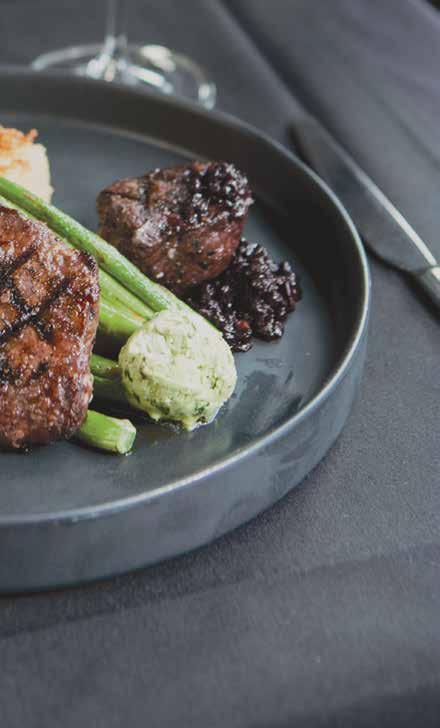
1600 Snow Creek Dr., 435-9018242, five5eeds.com
LUNCH
Bacon Bleu Cheeseburger ($16.50) from Annex The legendary buffalo burgers from the No Name Saloon are available to people of all ages at the Annex. The bacon bleu burger is everything it’s cracked up to be and more.
449 Main St., 435-649-6667, annexburger.com
DINNER
Trio of Wild Game ($55) from Riverhorse on Main
When mountain fare’s done right, who am I to argue? The buffalo, venison and elk combo with a port reduction is a highly elevated version of a western classic you could imagine done over a campfire.
540 Main St., 435-649-3536, riverhorseparkcity.com
PHOTOS BY ADAM FINKLE
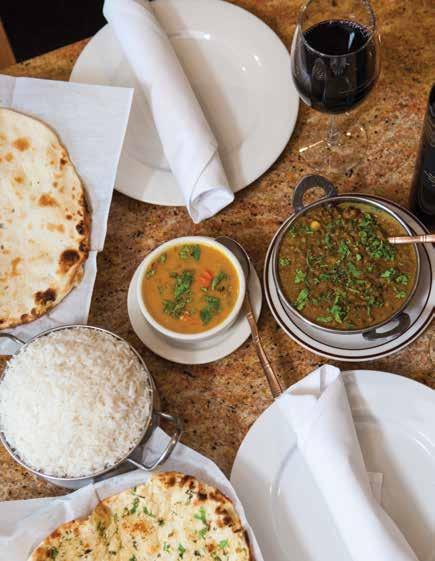
VEGETARIAN VACATION
Plant-based diners rejoice! Fertile frontiers have given rise to a wonderful variety of vegetarianfriendly dishes on the Wasatch back.
BREAKFAST
Buddha Bowl of Goodness ($15) from Harvest An alluring brew of veggies and grains—highlighted by the likes of butternut pumpkin purée, herb salad, avocado and more—is both morally conscious and utterly delicious.
820 Park Ave., 435-604-0463, harvestparkcity.com
LUNCH
Falafel and Hummus Tacos ($5 each) from Vessel Kitchen Flat out the best falafel in town is rolled into a naan flatbread taco with some spicy Fresno chili and mango slaw. It sure beats bean and cheese.
1784 Uinta Way, 435-2008864, vesselkitchen.com
DINNER
Dal Makhani ($14.99) from Ganesh
This delectable concoction of black lentils, onions, tomatoes and spices, with a little naan thrown in, is a wonderfully comforting dish to warm up with after a long day in playing in the surrounding mountains and on the ski hill.
1811 Sidewinder Dr., 435-5384110, ganeshindiancuisine.com
GANESH INDIAN CUISINE










